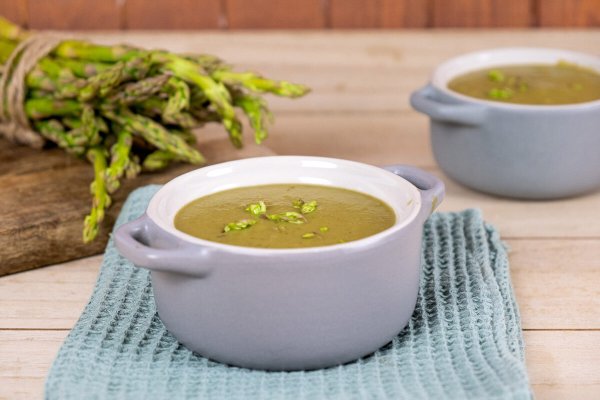
This apple jalapeño sauerkraut recipe is full of flavor, color, and probiotics. Plus, it doesn’t take all day to make, especially with help from friends!

Do you want to try a unique take on sauerkraut? Are you wondering what to add to sauerkraut to make it taste better? This apple jalapeño sauerkraut recipe contains a colorful array of vegetables with bold flavor profiles and a little spice.
If you prefer more traditional but still just as healthy sauerkraut, try this recipe for lacto-fermented sauerkraut. Or try curtido, which has a similar flavor to sauerkraut but some consider it more palatable.
Why I Like Fermenting Foods
When you use fermentation for long-term food preservation, it doesn’t lose its nutrients like in the canning or dehydrating process. The food becomes healthier for you because it is full of powerful probiotics. Eating fermented foods is a great way to start adding traditional, whole-foods to your diet.
The process of fermenting foods can sound intimidating, but learning the basics of fermentation is even more straightforward than learning the basics of canning. And so many different foods can be fermented.
Supplies for fermentation are minimal, and fermenting can offer a great solution when you can’t find canning supplies. An additional bonus is that fermentation doesn’t heat the kitchen on a hot day!

How Long Does Sauerkraut Last?
Once the sauerkraut reaches fermentation and is in cold storage, it can last indefinitely. If you do not have a root cellar system, you can store sauerkraut in the refrigerator.
When we recorded this video, we did not have a root cellar. We have now embarked on that project, and you can join us in our journey as we share everything we learned about building an in-ground stone root cellar.
Homesteading Hack: Sauerkraut’s probiotics go dormant when frozen, allowing you to store sauerkraut in the freezer or even outside during the cold winter months!
If you are patient, this apple jalapeño sauerkraut tastes the best at the 6-month mark. At around the 2-year mark, the sauerkraut may lose its consistency and become mushy. However, the sauerkraut retains its great flavor and is still edible.
What Can I Mix With Sauerkraut?
Sauerkraut is a versatile food. You can add spices and vegetables to your liking. It is a food you can experiment with to achieve the flavors you love.
This apple jalapeño sauerkraut recipe blends sweet and spicy whole foods like apples, garlic, ginger, and peppers, but you can adjust this recipe to your flavor preferences.
The critical thing to remember is that sea salt and correct moisture levels are the most important steps to follow.
Should I Add Vinegar to Sauerkraut?
In general, use vinegar when pickling foods but not when fermenting foods. Fermented sauerkraut contains sea salt, which is a catalyst for the fermentation process.
Vinegar slows the fermentation process and can limit the growth of all the healthy probiotics produced during fermentation.

Supplies
Fermentation doesn’t require expensive or specialized supplies and is an excellent method for purchasing preservation tools on a budget.
- Cutting Board – Cutting boards not only save your countertops but make for easy transfer of ingredients to the bowl.
- Large Knife – A sharp chef knife works best for this recipe. (Learn how to sharpen your knives here.)
- Large Stainless Steel Bowl – A 20-30 quart bowl is ideal for this recipe. However, you could use a smaller bowl and work this recipe in batches.
- Heavy Wooden Spoon – This could also be a potato masher, meat pounder, or any other flat, heavy utensil for pounding vegetables.
- Half-Gallon Mason Jar w/Lid (or crock) – You can also use a crock or other types of fermentation vessels. I prefer a plastic Mason jar lid or this fermenting crock, but any lid that does not create an airtight seal works fine.
- A Cabbage Leaf – Save this aside for the sealing process at the end of the recipe.

Ingredients
- Cabbage – Select a dense medium cabbage weighing about 5 pounds.
- Fresh Ginger – Peeled and minced. Use fresh ginger root or juice and adjust the amount to your liking.
- Red Bell Pepper– Red pepper adds a sweet flavor profile and a colorful appeal.
- Jalapeño Peppers – This can vary depending on your preference for the spice level. If you want it less spicy, do not include the jalapeño seeds.
- Apple – The apple adds a sweet taste to contrast the spice and salt.
- Garlic – Learn how to plant garlic, and have homegrown garlic for this recipe! Adjust the amount of garlic based on your taste.
- Onion – Homegrown onions make this recipe pop. You can learn to grow onions from seed and store onions the old-fashioned way. Any variety of onions will work.
- Salt – My go-to salt is Redmond Real Salt. (Using that link for Redmond Salt will automatically give you 15% off your order!) Do not skimp on the salt. Sea salt aids in the fermenting process. Homesteading Hack: You can save the brine from sauerkraut that you have already eaten to use in place of the sea salt.



How to Make Apple Jalapeño Sauerkraut
- Gather all your ingredients.
- Before chopping the cabbage, remove the outer cabbage leaves to save aside to use as a covering for your sauerkraut when it is complete.
- Finely shred the cabbage. The finer the pieces, the easier it is to get the juice out of them. Homesteading Hack: The finer you shred your vegetables, the easier it is to get the juice out of them when pounding, and they will also ferment more quickly.
- Chop the remaining vegetables as uniform in size as possible. I like to use tools like this Breville dicing kit for my food processor.
- Once all the vegetables are shredded and diced, layer them in a large stainless steel bowl, starting with the cabbage.
- Sprinkle three tablespoons of sea salt on top.
- Pound the vegetables for about 15 minutes to release the juices. You can use a kraut pounder, a heavy, flat-bottomed wooden spoon, a potato masher, or any heavy utensil to pound the sauerkraut. Involve your kids in this step! Homesteading Hack: Let the vegetables sit and soften on their own before pounding. The salt will break down the vegetables and do some work for you. I prefer just getting it done instead of having a half-completed project in my kitchen. But, you can plan break times before or during this pounding process. If you decide to take a break, cover the sauerkraut with a towel to keep any fruit flies or anything else out.
- Once the sauerkraut has broken down quite a bit and has become juicy, pack it into the half-gallon mason jar or sauerkraut crock.
- Push your apple jalapeño sauerkraut into the jar tightly so the liquid completely covers all the vegetables. You do not want any of your vegetables to be above the line of liquid.
- Take a paper towel, dip it in the brine and wipe the inside edges of the top of the jar with the brine to clean off any bits.
- Take a piece of the cabbage leaf you had set aside and press it down over the sauerkraut. Smooth out any air bubbles. It should tightly coat the surface. You could set a fermenting weight on top of the cabbage leaf, or use a shot glass or any small heavy object, to keep the cabbage leaf from being pushed up.
- Put a lid on your Mason jar. Use a silicone fermentation lid with a one-way waterless valve. Or, use a plastic screw-top Mason jar lid. I prefer the plastic lid. It does not seal tightly, allowing the sauerkraut to off-gas. There are many different options on the market, but just ensure that the lid you use is not airtight.
- Store the sauerkraut on the counter for five days. Check it regularly to make sure mold does not form. If it does, just scoop it off the top and repeat steps 12 and 13. A little mold around the top does not ruin the whole batch of sauerkraut. You will see bubbles form, and if you take off the lid to smell it, it will smell yeasty, spicy, and delicious.
- Transfer to a cool storage place like a root cellar or a refrigerator.
- Freezing your sauerkraut is an option. Once you bring your sauerkraut up to room temperature, the quality of the sauerkraut comes right back, and the probiotics spring back to life.
- Once you open your jar of sauerkraut and begin eating it, store it in the refrigerator until it is gone. Enjoy! Homestead Hack: Always use a clean utensil every time you dip into the jar of sauerkraut to avoid introducing bacteria to your entire batch.



Did you make this recipe? If so, please leave a star rating in the recipe card below. Then snap a photo and tag us on social media @homesteadingfamily so we can see!
This recipe was originally published on Full of Days and shared with us by Kelsey Steffen.
Other Fermented Recipes & Tips
- Preserved Limes with Fermentation
- Homemade Fermented Ginger Carrots
- Lacto-Fermented Sauerkraut
- Apple Scrap Vinegar
- Preserved Lemons
- Easy Homemade Lacto-Fermented Mayo
- Lacto-Fermented Green Beans (Pizza Beans)
- Fermented Tomatoes
- Guide to Fearless Fermenting

Apple Jalapeño Sauerkraut
Equipment
- Large Bowl Stainless Steel
- Wooden spoon or Kraut Pounder
- Half-Gallon Mason Jar or Fermenting Crock
Ingredients
- 1 medium cabbage (about 5 pounds)
- 1 Tablespoon ginger (fresh)
- 1 red bell pepper
- 1 jalapeno (or two if you like it spicy)
- 1 apple
- 2 cloves garlic (or more, to taste)
- 1 onion
- 3 Tablespoons salt
Instructions
- Gather all your ingredients.
- Before chopping the cabbage, remove the outer cabbage leaves to save aside to use as a covering for your sauerkraut when it is complete.
- Finely shred the cabbage. The finer the pieces, the easier it is to get the juice out of them.
- Chop the remaining vegetables as uniform in size as possible.
- Once all the vegetables are shredded and diced, layer them in a large stainless steel bowl, starting with the cabbage.
- Sprinkle three tablespoons of sea salt on top.
- Pound the vegetables for about 15 minutes to release the juices. You can use a kraut pounder, a heavy, flat-bottomed wooden spoon, a potato masher, or any heavy utensil to pound the sauerkraut.
- Once the sauerkraut has broken down quite a bit and has become juicy, pack it into the half-gallon mason jar or sauerkraut crock.
- Push your apple jalapeño sauerkraut into the jar tightly so the liquid completely covers all the vegetables. You do not want any of your vegetables to be above the line of liquid.
- Take a paper towel, dip it in the brine and wipe the inside edges of the top of the jar with the brine to clean off any bits.
- Take a piece of the cabbage leaf you had set aside and press it down over the sauerkraut. Smooth out any air bubbles. It should tightly coat the surface. You could set a fermenting weight on top of the cabbage leaf, or use a shot glass or any small heavy object, to keep the cabbage leaf from being pushed up.
- Put a lid on your Mason jar. Use a silicone fermentation lid with a one-way waterless valve. Or, use a plastic screw-top Mason jar lid. I prefer the plastic lid. It does not seal tightly, allowing the sauerkraut to off gas. There are many different options on the market, but just ensure that the lid you use is not airtight.
- Store the sauerkraut on the counter for five days. Check it regularly to make sure mold does not form. If it does, just scoop it off the top and repeat steps 12 and 13. A little mold around the top does not ruin the whole batch of sauerkraut. You will see bubbles form, and if you take off the lid to smell it, it will smell yeasty, spicy, and delicious.
- Transfer to a cool storage place like a root cellar or a refrigerator.
- Freezing your sauerkraut is an option. Once you bring your sauerkraut up to room temperature, the quality of the sauerkraut comes right back, and the probiotics spring back to life.
- Once you open your jar of sauerkraut and begin eating it, store it in the refrigerator until it is gone. Enjoy! Homestead Hack: Always use a clean utensil every time you dip into the jar of sauerkraut to avoid introducing bacteria to your entire batch.
Notes
- The finer you shred your vegetables, the faster they will ferment.
- Let the vegetables sit and soften on their own before pounding. The salt will break down the vegetables and do some work for you. I prefer just getting it done instead of having a half-completed project in my kitchen. But, you can plan break times before or during this pounding process. If you decide to take a break, cover the sauerkraut with a towel to keep any fruit flies or anything else out.
- Always use a clean utensil every time you dip into the jar of sauerkraut to avoid introducing bacteria to your entire batch.
















